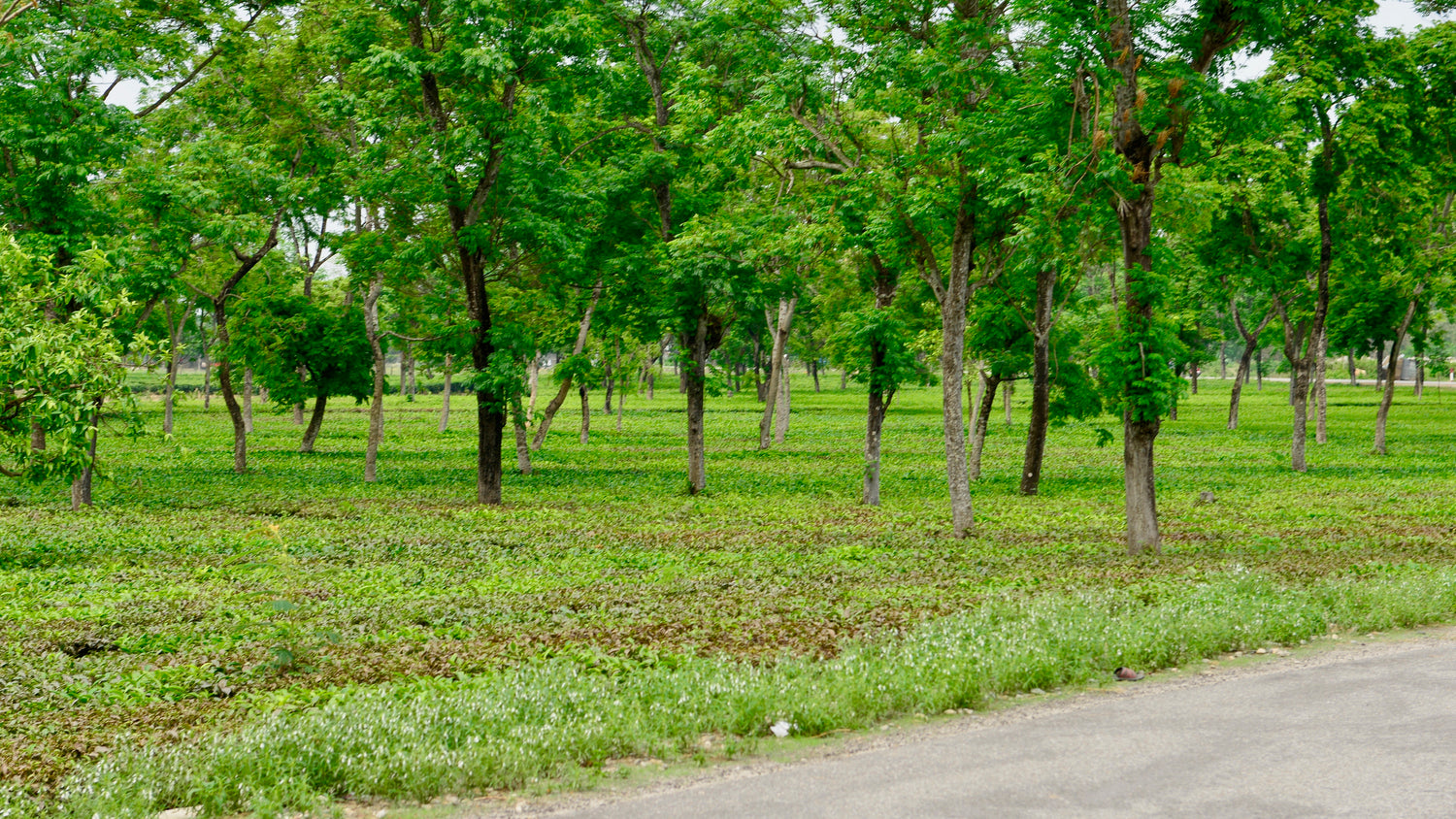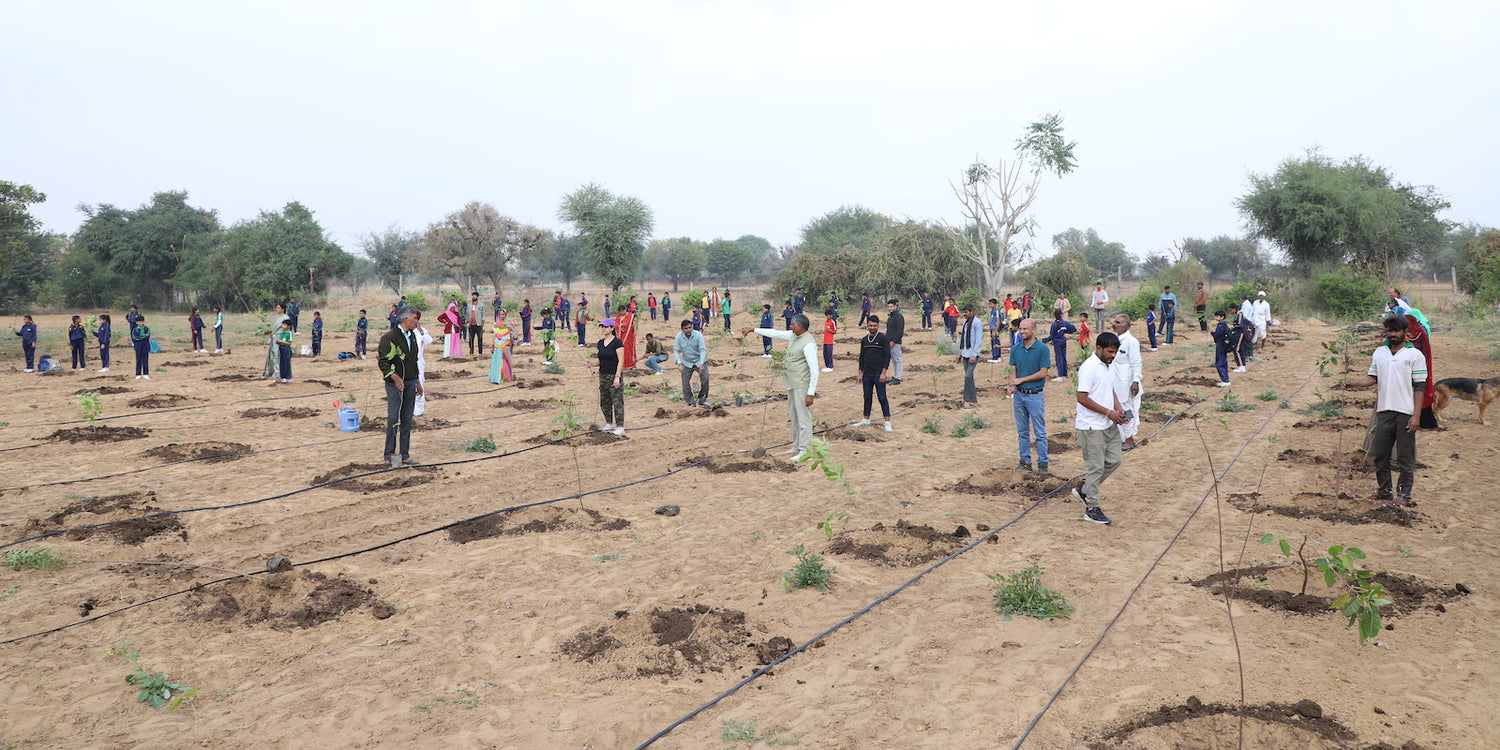Agroforestry in Tamil Nadu: Transforming Coastal and Inland Agricultur
Tamil Nadu, with its rich cultural heritage and diverse geography, is a land where agriculture plays a pivotal role in livelihoods and the economy. Th Read more
Connect with us
-
👥 Corporates
If you are looking for:
- 🌲 Tree Plantation Events
- 📊 CSR Projects
📧 corporate@growbilliontrees.com
📞 +91 9699723523
💬 +91 9325931304 WhatsApp (Only)
🕒 Mon - Sat | 10am - 7pm IST
-
🧩 Tree Plantation NGOs
If you are looking for:
- 💰 Financial Assistance
- 🤝 Operational Support
📧 support@growbilliontrees.com
📞 +91 9699723523
💬 +91 9325931304 WhatsApp (Only)
🕒 Mon - Sat | 10am - 7pm IST
-
🌼 Individuals
If you are looking for:
- 👥 Group Tree Plantation Drive
- 🌳 Bulk Tree Plantation
📞 +91 9699723523
💬 +91 9325931304 WhatsApp (Only)
🕒 Mon - Sat | 10am - 7pm IST
Trending
Trees for Corporates
Agroforestry in Tamil Nadu: Transforming Coastal and Inland Agriculture
Tamil Nadu, with its rich cultural heritage and diverse geography, is a land where agriculture plays a pivotal role in livelihoods and the economy.
The state’s unique mix of coastal and inland regions offers immense potential for agroforestry, a sustainable land-use practice that integrates trees with crops and livestock.
Agroforestry in Tamil Nadu is becoming a game-changer, addressing environmental challenges, enhancing farmer incomes, and ensuring ecological balance.
Historical Context of Agroforestry in Tamil Nadu
Agroforestry practices in Tamil Nadu are deeply rooted in tradition.
Historically, farmers planted trees like Neem (Azadirachta indica), Banyan (Ficus benghalensis), and Palmyra Palm (Borassus flabellifer) alongside crops to provide shade, fodder, and medicinal benefits.
The ancient Tamil texts, such as Tolkappiyam, mention the integration of trees in agricultural landscapes, showcasing how agroforestry was woven into Tamil Nadu’s agrarian culture.
The Need for Agroforestry in Tamil Nadu
1. Combatting Coastal Erosion
Tamil Nadu’s long coastline faces severe erosion due to climate change and human activities. Agroforestry systems with trees like Casuarina help stabilize coastal soils and act as natural barriers against tidal waves.
2. Restoring Degraded Lands
Inland regions, especially in areas like Dharmapuri and Krishnagiri, face challenges of land degradation and low soil fertility. Agroforestry systems restore soil health and make unproductive lands arable again.
3. Enhancing Farmer Incomes
By integrating high-value timber species, fruit trees, and crops, agroforestry provides multiple income streams. Farmers can earn from timber, fruits, and even non-timber products like honey and gum.
4. Increasing Green Cover
Agroforestry contributes significantly to increasing Tamil Nadu’s green cover, aligning with India’s Green India Mission to combat deforestation and climate change.
5. Improving Climate Resilience
Agroforestry buffers against erratic rainfall, cyclones, and heatwaves, ensuring agricultural stability in Tamil Nadu’s coastal and inland areas.
Scientific Benefits of Agroforestry
- Improved Soil Health: Trees like Teak and Eucalyptus enrich the soil by adding organic matter and improving nitrogen levels.
- Water Conservation: Agroforestry reduces water runoff and increases groundwater recharge, ensuring better water availability for crops.
- Biodiversity Hotspots: Agroforestry farms in Tamil Nadu support a variety of species, including birds, insects, and small mammals.
Common Agroforestry Practices in Tamil Nadu
1. Casuarina-Based Agroforestry
Casuarina trees, common along Tamil Nadu’s coastlines, are grown with crops like groundnut and pulses, providing income from timber while protecting the coast from erosion.
2. Horti-Silviculture
This system integrates fruit trees like Mango, Jackfruit, and Sapota (Chikoo) with timber species, creating a sustainable blend of nutrition and economic benefits.
3. Silvo-Pastoral Systems
Combining trees and grasses, this system provides fodder for Tamil Nadu’s livestock while improving soil and water conservation.
4. Agri-Silviculture
Staple crops like paddy and millets are grown alongside trees like Neem and Bamboo, maximizing productivity on farmlands.
Fun Facts About Agroforestry in Tamil Nadu
- Palmyra Palm Power: Known as Tamil Nadu’s state tree, the Palmyra Palm supports livelihoods with products like jaggery, toddy, and palm leaves.
- Casuarina’s Coastal Strength: Casuarina trees not only stabilize soil but also withstand cyclones, making them a favorite in coastal agroforestry.
- Jackfruit Jackpot: Tamil Nadu is among India’s largest producers of jackfruit, with agroforestry boosting its cultivation.
Environmental Impact of Agroforestry in Tamil Nadu
1. Reducing Coastal Erosion
Agroforestry systems along Tamil Nadu’s coast act as shields against tidal waves and cyclones, protecting farmlands and villages.
2. Restoring Biodiversity
Agroforestry systems support pollinators, birds, and small mammals, creating habitats that enhance ecological balance.
3. Improving Air Quality
Trees in agroforestry filter pollutants and sequester carbon, contributing to cleaner air and combating climate change.
4. Mitigating Heat Island Effects
In urban and peri-urban areas, agroforestry reduces temperatures by increasing vegetation cover and providing shade.
Challenges in Agroforestry Adoption
-
Lack of Awareness Many farmers are unaware of agroforestry’s long-term benefits, leading to slow adoption rates.
-
Water Scarcity While agroforestry conserves water, initial establishment requires irrigation support, which can be challenging in drought-prone regions.
-
Policy Barriers Complex regulations around tree felling and timber trade discourage farmers from planting high-value trees.
-
Market Access Farmers often face challenges in finding markets for agroforestry products, impacting profitability.
Grow Billion Trees: Pioneering Agroforestry in Tamil Nadu
Grow Billion Trees is actively transforming Tamil Nadu’s agricultural landscapes through innovative agroforestry projects that enhance sustainability, boost farmer incomes, and combat climate change.
Collaborations
- Partnering with the Tamil Nadu Forest Department and local NGOs to implement large-scale agroforestry projects.
- Collaborating with agricultural universities to research and promote drought-resistant tree species.
Execution Strategies
- Tree Nurseries: Establishing nurseries to supply high-quality saplings of species like Casuarina, Teak, and Jackfruit.
- Farmer Training Programs: Organizing workshops and demonstrations to educate farmers on agroforestry techniques and their benefits.
- Market Linkages: Facilitating connections between farmers and industries to ensure fair prices for timber and non-timber products.
Awareness and Advocacy
- Running community outreach programs to highlight agroforestry’s role in climate resilience and rural development.
- Sharing success stories of farmers who have transformed their lands with agroforestry practices.
Key Achievements by Grow Billion Trees
- Tree Plantation Drives: Over 8 million trees planted across Tamil Nadu, increasing green cover and restoring degraded lands.
- Farmer Empowerment: Enabled over 25,000 farmers to adopt agroforestry, increasing their incomes by up to 30%.
- Carbon Sequestration: Agroforestry projects under Grow Billion Trees have sequestered over 1 million tons of carbon dioxide in Tamil Nadu.
Future Prospects
By 2030, agroforestry in Tamil Nadu has the potential to:
- Increase the state’s green cover by 15%, supporting India’s climate action goals.
- Restore over 500,000 hectares of degraded land, ensuring sustainable agriculture.
- Provide additional income to over 50,000 farming households, enhancing rural economic stability.
Conclusion
Agroforestry in Tamil Nadu is revolutionizing the way agriculture is practiced, offering a harmonious blend of sustainability, profitability, and environmental conservation.
From protecting coastlines to enriching inland farms, this practice is paving the way for a greener and more resilient Tamil Nadu.
Grow Billion Trees is at the forefront of this transformation, empowering farmers, restoring ecosystems, and building a sustainable future. With collective efforts, agroforestry will continue to be a cornerstone of Tamil Nadu’s agricultural and environmental success.
Casuarina Agroforestry in Tamil Nadu
Known as the coastal warrior, Casuarina trees protect Tamil Nadu’s shores from erosion while providing farmers with high-value timber and windbreaks for crops.
Neem in Tamil Nadu Agroforestry
The multitasking Neem tree fights pests, improves soil, and offers medicinal value, proving its worth as a timeless hero in Tamil Nadu’s farmlands.
Palmyra Palm Agroforestry
Tamil Nadu’s state tree, the Palmyra Palm, offers everything from shade to jaggery, supporting livelihoods and cultural heritage with its multipurpose benefits.
Horti-Silviculture in Tamil Nadu
A flavorful mix of fruit trees like Mango and Sapota with timber species creates sustainable and profitable farms across Tamil Nadu.
Silvo-Pastoral Systems in Tamil Nadu
Blending trees and grasses, this system ensures fodder for livestock and protects Tamil Nadu’s grazing lands from erosion.
Jackfruit in Tamil Nadu Agroforestry
Jackfruit trees deliver a sweet jackpot, offering nutritious fruits and sustainable income in agroforestry systems.
Bamboo Agroforestry in Tamil Nadu
Bamboo’s rapid growth and versatile uses make it the “green gold” of Tamil Nadu’s agroforestry landscape.
Coastal Agroforestry in Tamil Nadu
Protecting shorelines with trees like Casuarina, this system acts as a natural shield against cyclones and rising sea levels.
Agroforestry and Biodiversity in Tamil Nadu
Supporting pollinators, birds, and mammals, agroforestry turns Tamil Nadu’s farms into buzzing biodiversity hotspots.
Agroforestry and Carbon Sequestration
These systems trap carbon dioxide, turning Tamil Nadu’s farmlands into unsung climate warriors against global warming.
Grow Billion Trees in Tamil Nadu Agroforestry
Empowering farmers with training, saplings, and market connections, Grow Billion Trees is greening Tamil Nadu one farm at a time.
Agri-Silviculture Systems in Tamil Nadu
Integrating staple crops like rice and millets with trees like Neem and Teak, this system maximizes productivity and sustainability in Tamil Nadu.
You may like
Corporate Plantations
FAQ
What is agroforestry in Tamil Nadu?
Agroforestry combines trees, crops, and livestock to boost farmer incomes and restore ecosystems. Grow Billion Trees promotes this sustainable practice to transform coastal and inland agriculture.
Why is agroforestry important in Tamil Nadu?
It combats coastal erosion, restores degraded lands, and diversifies farmer incomes. Grow Billion Trees ensures these benefits reach rural communities while increasing the state’s green cover.
How does agroforestry help coastal agriculture in Tamil Nadu?
Coastal trees like Casuarina protect shorelines, reduce wind damage, and stabilize soils. Grow Billion Trees empowers farmers to adopt coastal agroforestry systems for sustainability.
Which trees are best for agroforestry in Tamil Nadu?
Neem, Casuarina, Palmyra Palm, and Mango are top picks, offering timber, fruits, and soil enrichment. Grow Billion Trees provides high-quality saplings for these versatile species.
How does agroforestry improve livelihoods in Tamil Nadu?
Farmers earn dual incomes from crops and timber while benefiting from fodder and non-timber products. Grow Billion Trees supports this model with training and market connections.
What role does Casuarina play in Tamil Nadu agroforestry?
Casuarina trees act as coastal protectors and income generators, thriving in Tamil Nadu’s agroforestry landscapes. Grow Billion Trees promotes their integration into sustainable systems.
How does agroforestry contribute to biodiversity in Tamil Nadu?
Agroforestry farms create habitats for birds, pollinators, and small mammals, turning farms into biodiversity hotspots. Grow Billion Trees encourages designs that balance farming and conservation.
Can agroforestry help mitigate climate change in Tamil Nadu?
Yes, trees in agroforestry systems sequester carbon and reduce greenhouse gases. Grow Billion Trees scales up agroforestry projects to maximize climate benefits.
How does agroforestry support water conservation in Tamil Nadu?
Tree roots reduce water runoff and improve groundwater recharge, ensuring better water availability. Grow Billion Trees promotes these systems for sustainable water use.
What is the role of Palmyra Palm in Tamil Nadu agroforestry?
Palmyra Palm provides shade, fodder, and products like jaggery, making it a cultural and economic asset. Grow Billion Trees encourages its cultivation across Tamil Nadu.
What challenges do Tamil Nadu farmers face with agroforestry?
Lack of awareness and market access can hinder adoption. Grow Billion Trees bridges these gaps with training, resources, and support.
How does Grow Billion Trees promote agroforestry in Tamil Nadu?
We plant trees, train farmers, and build market linkages, ensuring agroforestry systems thrive and benefit both people and the environment.























